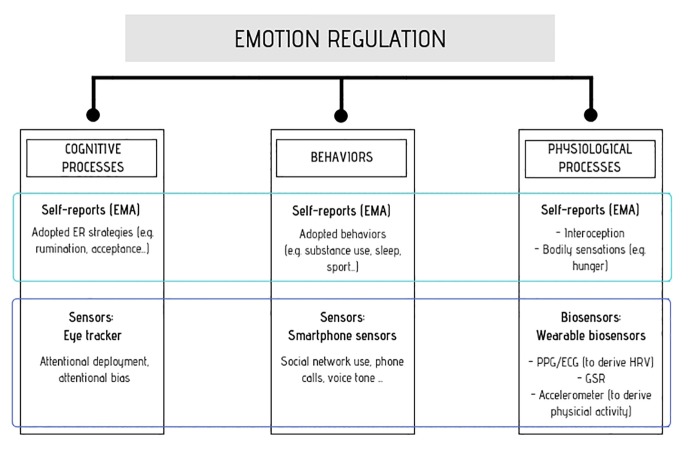Figure 1.
ER is composed of different facets: Cognitive mechanisms, behavioral aspects and physiological processes. The integration of different technologies could grasp all these facets, leading to a more comprehensive understanding of ER. On the one hand, the use of self-reports by means of EMA could assess the three dimensions, i.e., by asking people to report them on a mobile device. On the other hand, the use of embedded-sensors and biosensors could further increase the quantity and objectivity of this information. Cognitive processes, such as attentional deployment or attentional bias, could be investigated using an eye-tracker or other implicit measures like Go/No Go Tasks. Behaviours could be assessed using data gathered from embedded sensors, like number of calls/messages or use of social networks. Finally, the underlying physiological processes could be grasped thanks to wearable biosensors, such as wrist-watches that monitor HRV or GSR parameters. ER, emotion regulation; EMA, ecological momentary assessment; PPG, photoplethysmography; ECG, electrocardiogram; HRV, heart rate variability; GSR, galvanic skin response.

